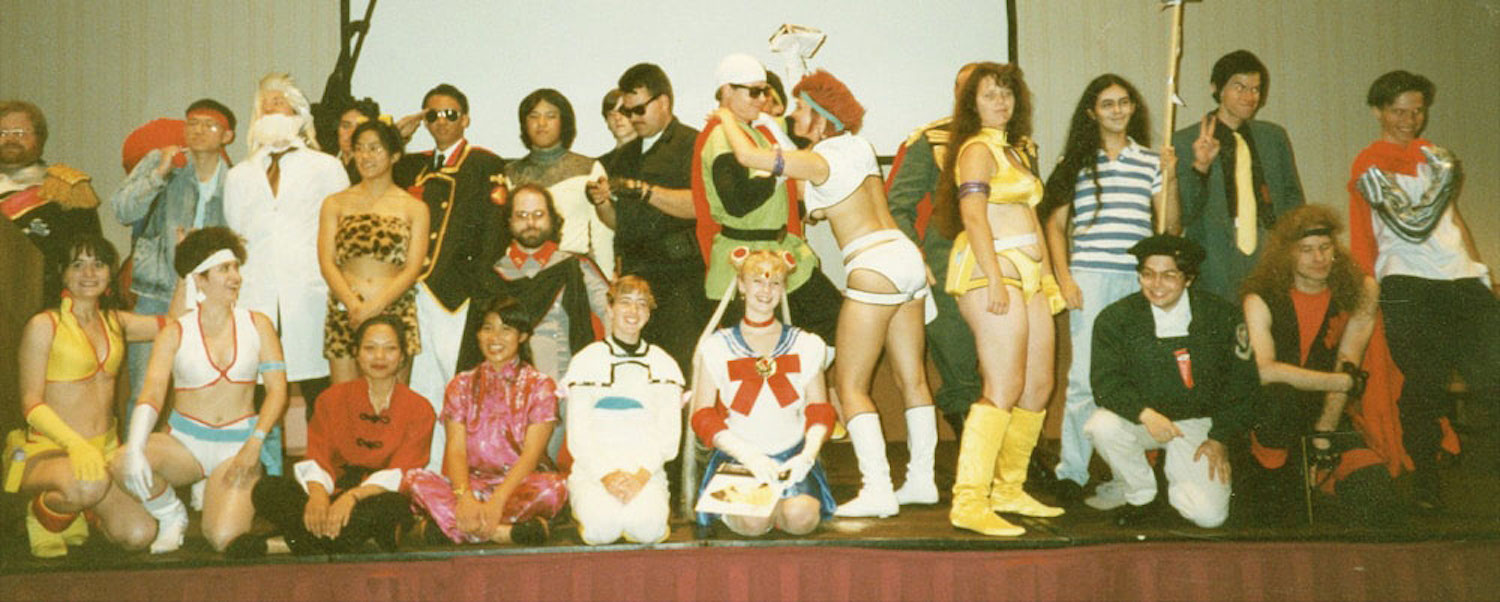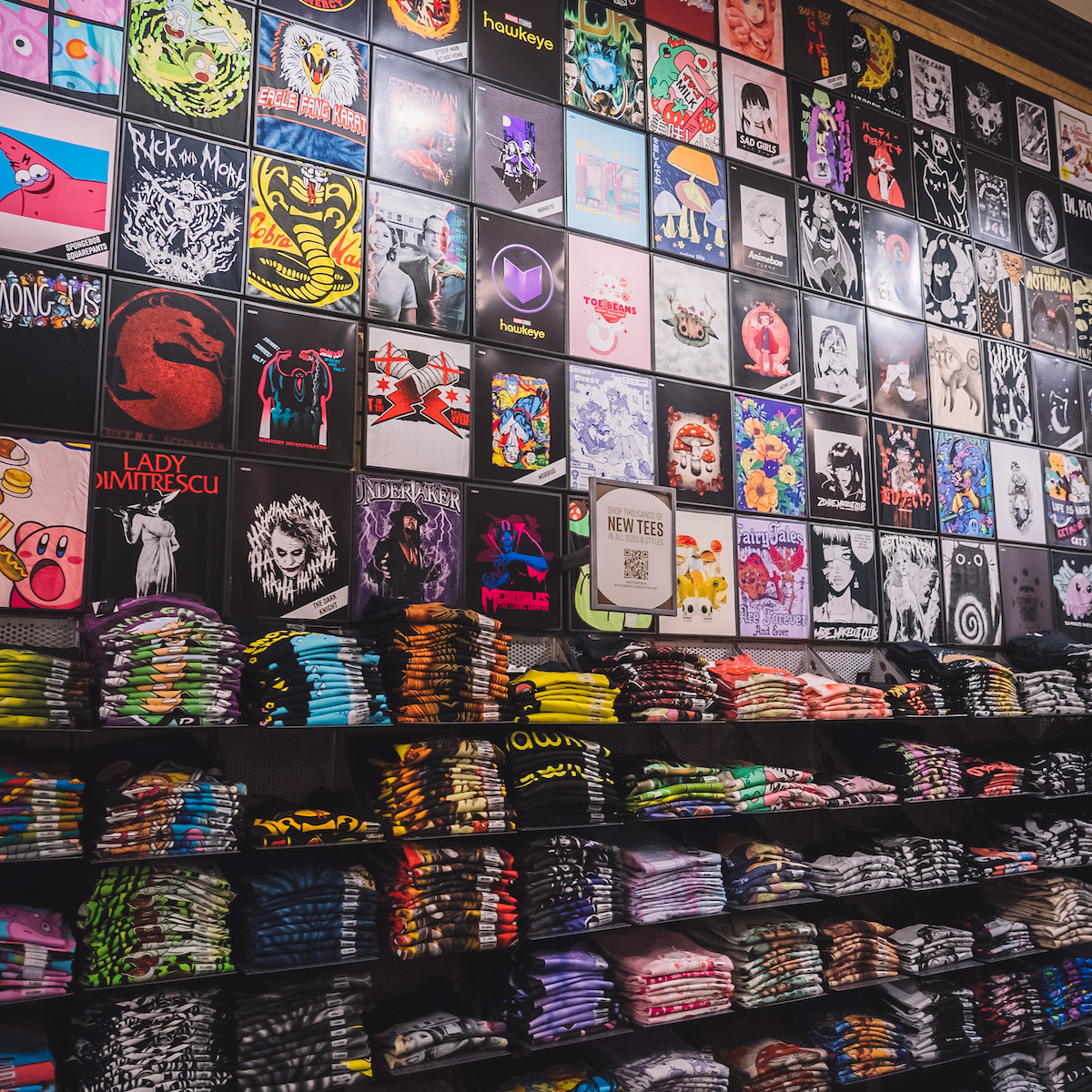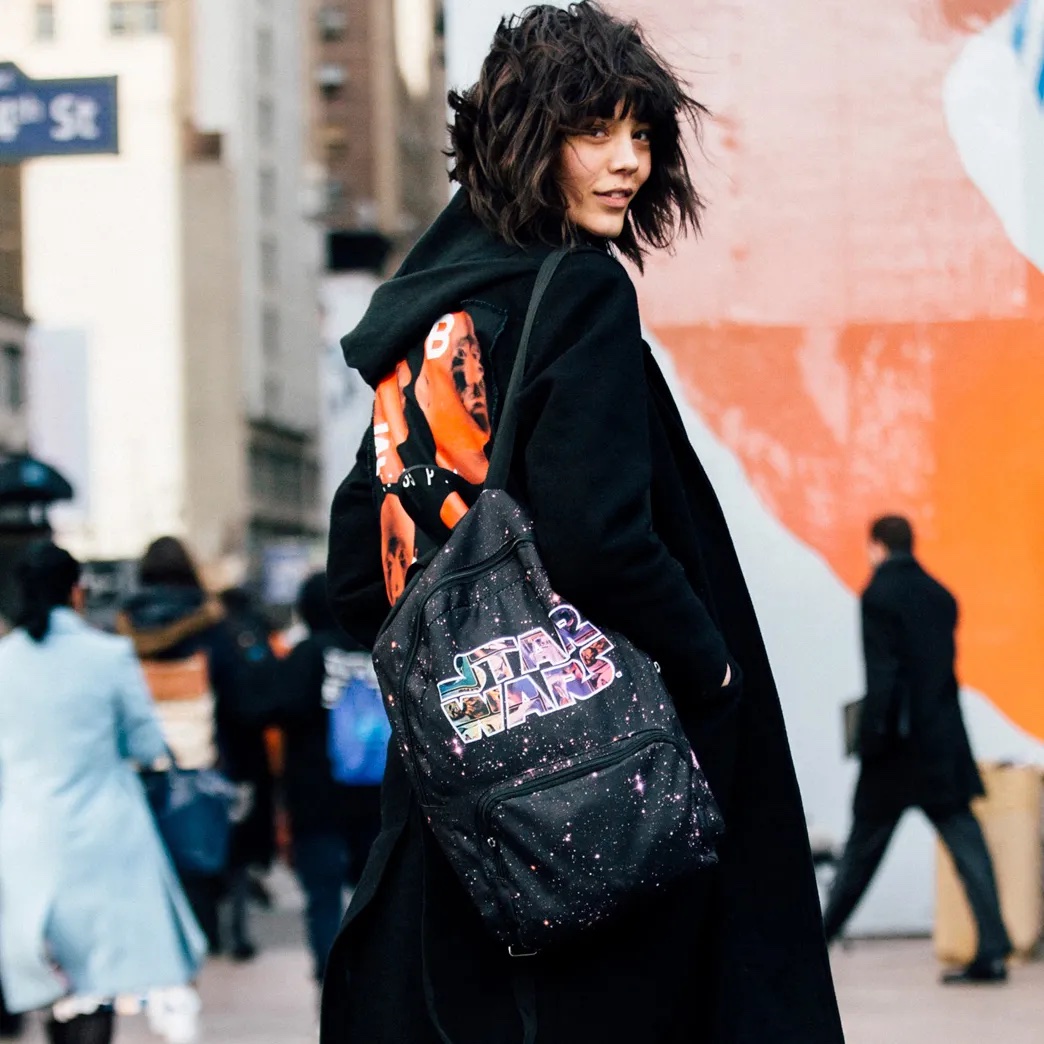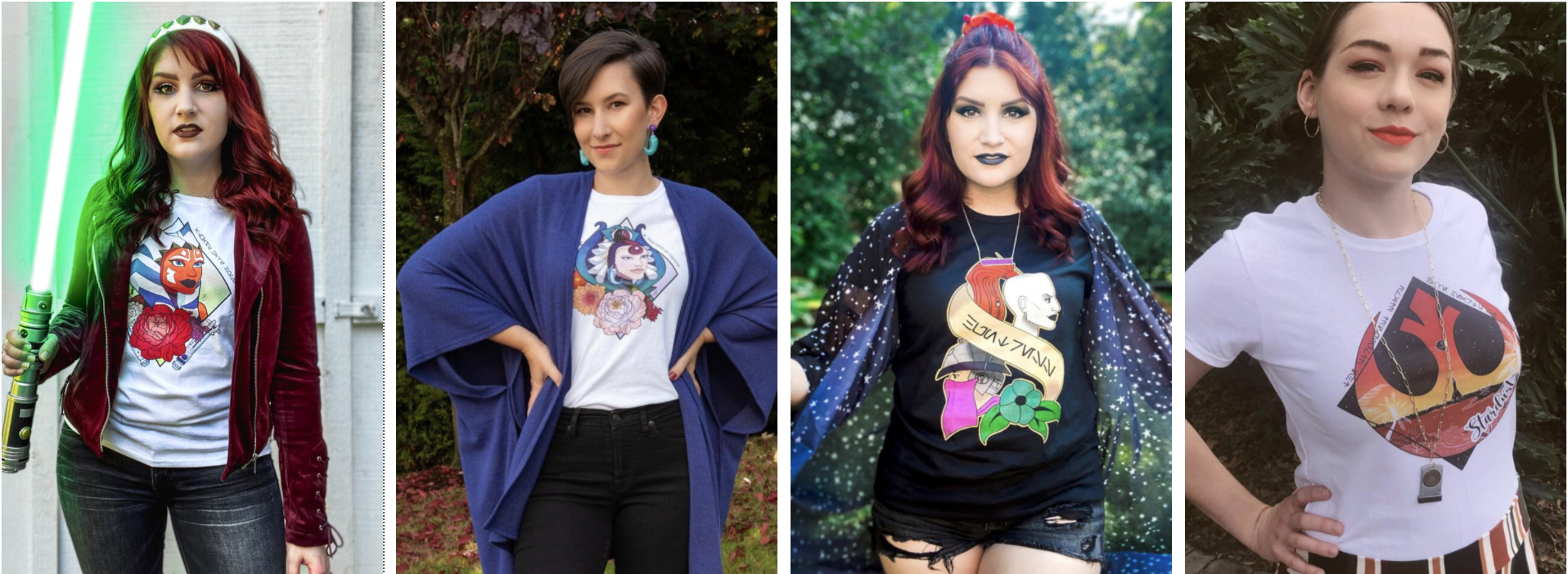Table of Contents Show
Fandom and fashion have become more intertwined with the rise of the online marketplace. Adoration of fictional works has always played a role in people’s fashion and identity, but with stores like Hot Topic and social media like Twitter, fandom has become a much bigger part of people’s lives than anybody anticipated. Openly expressing one’s interest in fictional works has allowed people to express themselves in ways they feel most comfortable, whether it be cosplaying their favorite character, Disneybounding, or simply wearing a shirt with their favorite show on it. It has also fostered connections among fans within the same fandom, showing that fandom is as important as a fashion statement as it is for a person’s sense of community.
Fandom As Fashion
People have always worn fandom as fashion in all its forms simply because they feel proud enough of their fandom to display it for all to see. Fandom as fashion is a historical topic, ranging from the early 30s to now, and its development is interesting.
The History Of Fandom Fashion
People have been wearing clothes that display their interests for decades, but it only solidified in the 1970s in the form of cosplay. There still weren’t fast fashion stores where people could buy fandom clothing, and it wasn’t very socially acceptable to wear “geek” clothing, so wearing fandom manifested itself in the form of cosplay. One of the first documented instances of cosplay (before the word was even invented) was at the 1st World Science Fiction Convention in 1939, where people wore rudimentary designs that represented their favorite characters. This blossomed in the 1970s and 80s with the rise of “geek culture,” including the Star Trek and Star Wars boom, along with animanga growing in popularity in the U.S.

Of course, people showcased their interests through fashion in ways other than cosplay during this time. This could look anywhere like styling one’s hair like Spock or doing pigtails like Sailor Moon. However, people couldn’t walk into a store and buy a shirt with their show’s logo on it on a grand-scale yet because the trend of fandom fashion was still in development. Despite the minimum amount of fandom merchandise, this did not stop fans from going to conventions where they could meet other like-minded fans and from having serious conversations about in-fandom issues while dressed in cosplay.
Fandom fashion provided a sense of camaraderie during a time when geek culture was the butt of the joke. The fact that people defied what other people thought of them and cosplayed or wore outfits that represented their fandom in such a strict society shows just how much wearing fandom fashion is important to one’s confidence, and more and more people have started jumping on this trend.
Fandom Fashion In Recent Years
Nowadays, it is much easier to buy and make fandom fashion, along with it being more socially acceptable to display in public. Fast fashion—and other fashion outlets—have risen alongside a demand for more fandom apparel, with thousands of stores now fulfilling this need. One of the first stores to do this was Hot Topic where they primarily marketed and catered to the scene/grunge/emo crowd, and sold apparel and merch from popular bands such as Pierce the Veil, My Chemical Romance, and Black Veil Brides. Hot Topic, along with Disney, were some of the first fandom-based stores in the early 2000s, and fans flocked to them to fulfill their fandom fashion desires.

Not many stores were doing it like Hot Topic in the early 2000s, but when other stores saw how successful Hot Topic was growing as a franchise and how much of a need there was amongst fans for fashion that represented their interests, they eventually caught on. Hot Topic itself has undergone a major transformation going from a dark aesthetic with screamo music blasting the second you walked in, to an expanded collection of geek culture and fandoms with strong cult followings featuring a variety of merchandise from anime, K-pop, and even television shows like Rick and Morty (2013-present). It has also expanded to cutesy aesthetics that include characters such as Hello Kitty, Pusheen, and Gudetama.
This is all to show how many fandoms are vying for the attention of stores to carry their interests. Many stores now, such as BoxLunch, Dolls Kill, and Shein are breaking into this fandom market through individual designs and collections. Hearing about a new line of clothing in partnership with Hello Kitty, My Little Pony (2010-2019), or BTS is not new. In fact, it is welcomed with open arms by hungry consumers, who want to be able to proudly display their fandom affiliation to others whether they are in the fandom or not. This clothing and these accessories are no longer limited to conventions or fan spaces as they are worn as everyday clothing, adding another pep in somebody’s step.

There are also options for the shier fans out there. Even though our society has grown to be more accepting (or straight up not caring what other people dress like) of fan fashion, some more judgmental spaces, such as schools, jobs, and families, can prevent a fan from fully expressing themselves. Sometimes cosplaying or wearing fandom fashion is against the rules, such as in Disney Parks so that people don’t confuse the characters with regular park-goers. Fans can sometimes simply find fandom fashion to be too gaudy and want something more tasteful. Whatever their opinion is, there are options for the more modest of fans.
For one, the term “subtle weeb” has been picking up traction in response to the fact that anime watchers have certain stereotypes, and anime/manga fans may want to avoid that while still displaying their favorite manga, show, or movie to only people who would understand. There have been stores that have picked up on this trend, mostly Etsy and Redbubble since the merch there is made by animanga fans who understand the plight of other fans. Shirts that subtly display the logo that the characters from Haikyu!! (2014-2020) wear on their uniforms, the green earrings Howl wears from Howl’s Moving Castle (2004), or the bracelet Kyo wears from Fruits Basket (2019-2021) are some examples of this trend.
For instances when it’s against the rules, such as in Disney Parks, fans have still found a way to get around it because they love to dress up as their favorite characters that much. Disney has a good reason for why fans can’t dress up as characters, but because Disney is so important to some fans, they pride themselves in Disneybounding (or dressing up in similar colors or clothing fashion as a Disney character) and posing next to their favorite characters. All this shows is how important it is for fans to be able to express themselves through clothing and how this factors into their personal identity.
Fandom As Identity
It was touched upon earlier, but fan fashion provides an immediate sense of community amongst fans, especially if the fashion is more subtle. If a fan can recognize an ordinary logo from a show and points it out to the fan, they form a connection within those few seconds and raises both their self-esteem and validates their interests. They may not become best friends right after the encounter, but the encounter will be enough to give them the sense that they are not alone in their interests, and, most importantly, it is not “weird” for them to display them. It gives them compliments and a sense of pride.

More people than ever before are describing themselves using group names from their favorite shows, bands, video games, etc., such as “army” (for Kpop fans), “Cumberbitches” (fans of Benedict Cumberbatch), and “Whovians” (fans of Doctor Who (2005-present). There used to be a few group names beforehand, such as the “Bobby soxers” (fans of Frank Sinatra or general fans of 1940s pop music), and names for shared fan hysteria, such as Beatlemania. However, these terms have ballooned thanks to the spread of social media, allowing more people than ever with the same interests to connect and form communities based on a certain TV show and musician.
While these communities may be a bit hectic at times due to drama, most of the time, these communities provide the safe spaces needed by a lot of people (mostly teenagers, especially teen girls) who need them. They raise people’s self-esteem whether or not they are active fans in the fandom simply by hearing about the prosperity of their fandom or when their favorite musician/actor/show wins an award. They provide a support system, with many online fans becoming close friends over time, just because they were both in the same fandom. It is more important than ever for people—especially teens—to have something they can go to when they are feeling stressed, and fandom provides that and more.
Clothes And Self-Esteem Galore
Fashion has always been tied to identity. It has been known as a way for people to express themselves and help them feel more confident. By adding fandom into the mix, people not only feel that confidence, but they create a sense of community among other fans who recognize their merch or when they post it online for others to see. Now that stores and fashion brands are picking up on the needs of the people, they are making fandom merch all the more accessible, allowing more people to feel confident in what they are wearing and feel proud that they are able to display their favorite piece of media.

Fashion and identity are inextricably linked; that is why there has been such a boom in different aesthetics. By integrating fandom apparel into the societal norm, people are becoming happier just by wearing a Tanjiro Kamado-inspired backpack to school or a Hello Kitty purse on their way to get coffee. Many people consider their fandom to be part of their identity, and if they are given another way to express their love for it outside of spoken admiration or social media, they are going to jump on it. Consumerism has never been better for self-esteem, and we can only sit back and watch as more fandom merch is pumped out by the millions by different stores and brands.
